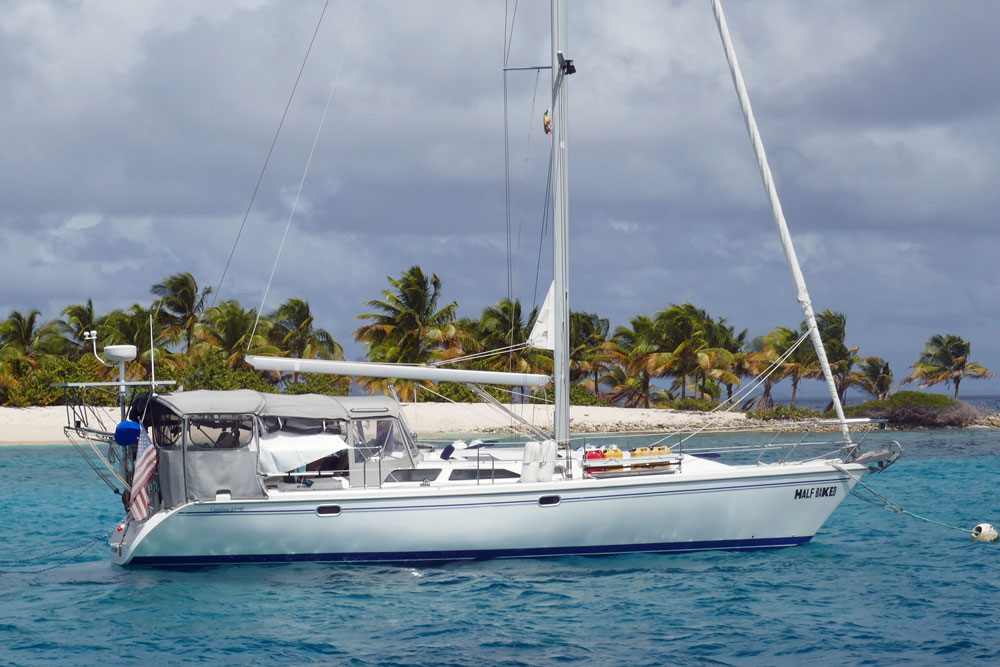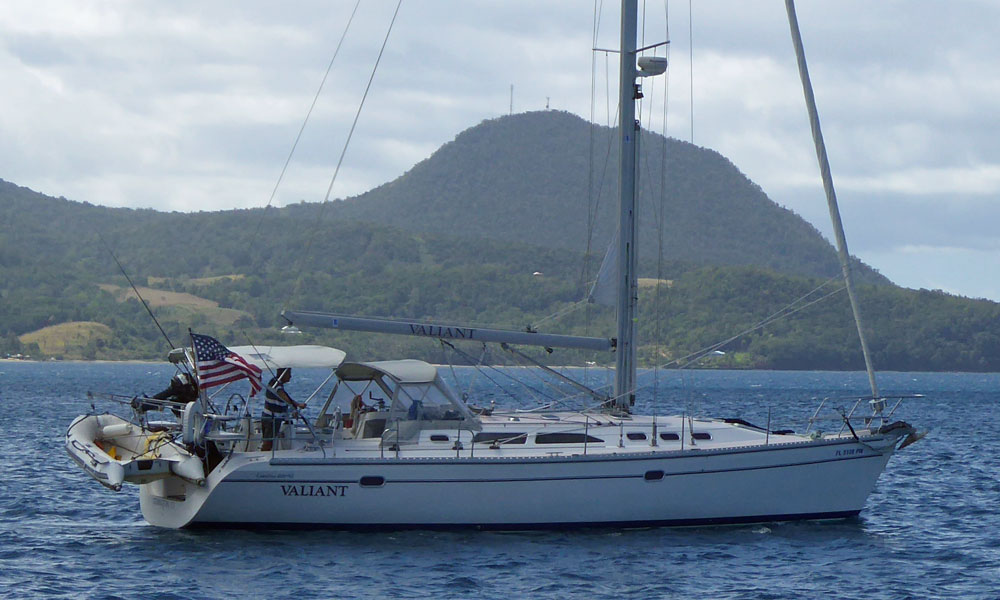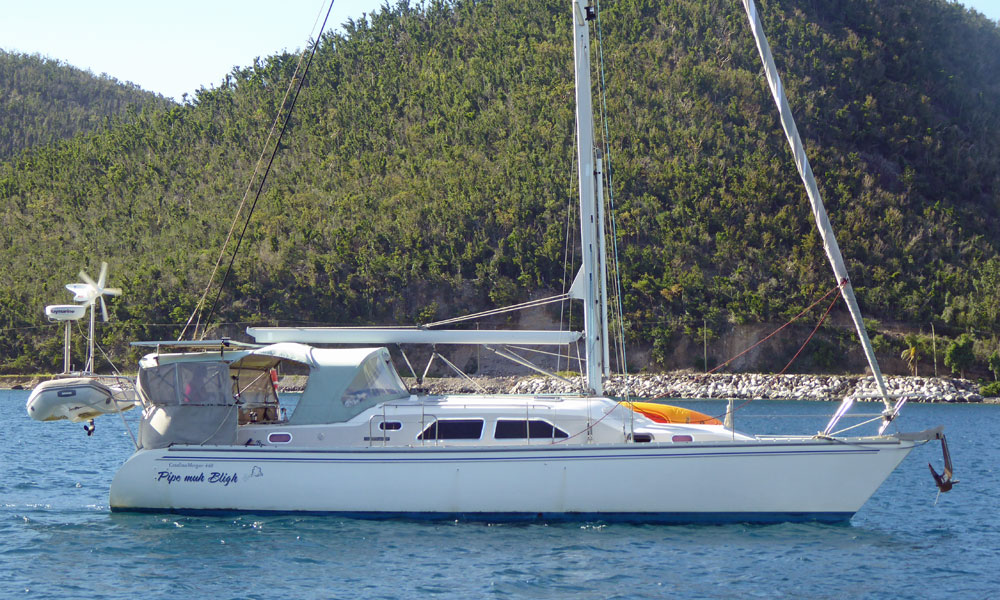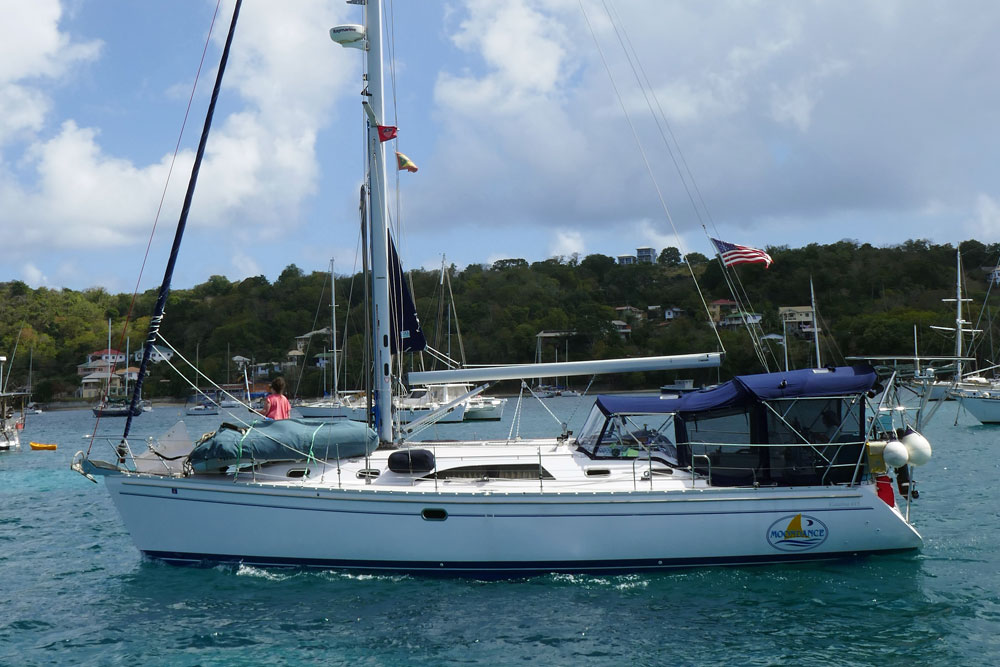- Home
- Cruising Yachts 35' to 40'
- Catalina 36 Mk1
The Catalina 36 Mk1 Sailboat
The Catalina 36 Mk1, a masthead cruising sloop, was designed by Frank Butler and built in the USA by Catalina Yachts.
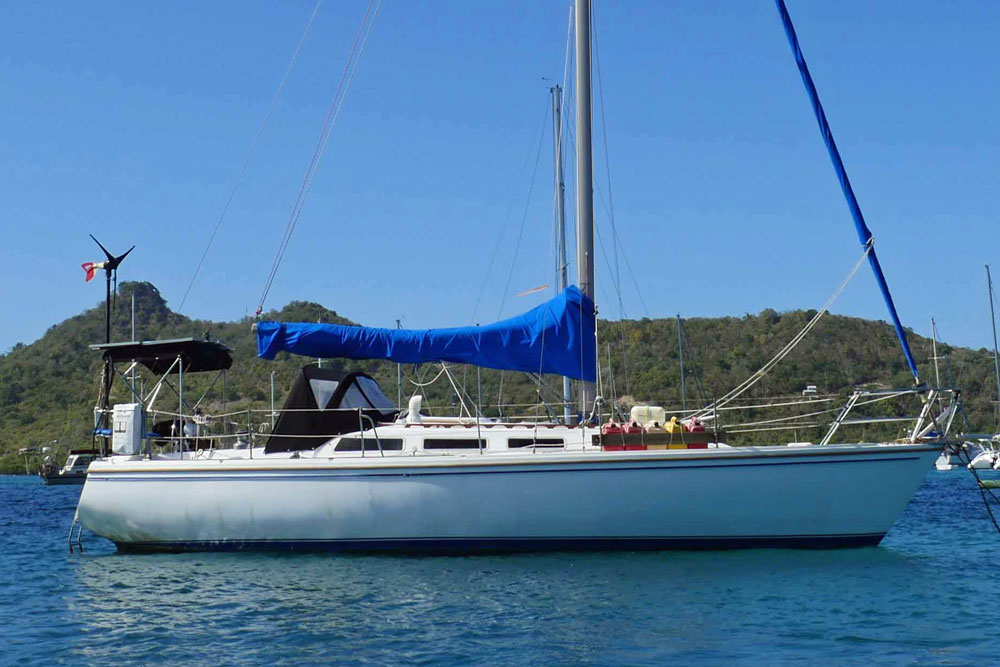 The Catalina 36 Mk1
The Catalina 36 Mk1Published Specification for the Catalina 36 Mk1
Underwater Profile: Fin keel with spade rudder
Hull Material: GRP (Fibreglass)
Length Overall: 36'4" (11.1m)
Waterline Length: 30'3" (9.2m)
Beam: 11'11" (3.6m)
Draft: 5'10" (1.8m)
Rig Type: Masthead Sloop
Displacement: 13,500 lb (6,123 kg)
Designer: Frank Butler
Builder: Catalina Yachts (USA)
Published Design Ratios for the Catalina 36 Mk1
1. Sail Area/Displacement Ratio: 15.4
2. Ballast/Displacement Ratio: 44.4
3. Displacement/Length Ratio: 218
4. Comfort Ratio: 24.0
5. Capsize Screening Formula: 2.0
Summary Analysis of the Design Ratios for the Catalina 36 Mk1
The Catalina 36 sailboat, based on the published design ratios, would theoretically have the following sailing characteristics:
- Sail Area/Displacement Ratio (15.4): This ratio is slightly below 16, indicating that the Catalina 36 might be considered marginally underpowered. This could mean that it may not reach its maximum potential speed as quickly or as easily as boats with a higher ratio. However, it also suggests that the boat might be easier to handle, especially for less experienced sailors.
- Ballast/Displacement Ratio (44.4): This ratio is above 40, suggesting that the Catalina 36 is a stiffer, more powerful boat that can stand up well to the wind. However, this ratio doesn't account for the location of the ballast. If the ballast is located in a shallow draft keel, the boat might be less stiff than if the ballast were in a bulb at the foot of its keel.
- Displacement/Length Ratio (218): This ratio falls within the range of Moderate Displacement, suggesting that the Catalina 36 has a good balance between stability and speed. It should be able to maintain a reasonable speed without requiring an excessive amount of sail area.
- Comfort Ratio (24.0): This ratio indicates that the Catalina 36 is associated with a motion similar to a coastal cruiser. This suggests that the boat should provide a relatively comfortable ride in most conditions, although it might not be as comfortable in heavy seas as boats with a higher comfort ratio.
- Capsize Screening Formula (2.0): This value indicates that the Catalina 36 has blue water capability and should be relatively stable and safe during ocean passages from this aspect.
It's important to note that these ratios are theoretical and provide a general idea of a boat's performance and comfort. They don't take into account other factors that can influence a boat's behavior, such as its hull shape, rigging design, and the skill of its crew.
For example, the Ballast/Displacement Ratio doesn't consider the location of the ballast, which can significantly affect a boat's stiffness.
Similarly, Ted Brewer's Comfort Ratio favors heavy displacement, narrow-beamed vessels with long overhangs, so modern light-displacement, beamy cruisers with plumb bows might not score well on this ratio even though they may have good bluewater capability.
Therefore, while these ratios can be useful for comparing different boats, they should be used in conjunction with other information and not as the sole basis for evaluating a boat's suitability for a particular purpose.
Your questions answered...
What design options were available for buyers of the Catalina 36 sailboat?
What design options were available for buyers of the Catalina 36 sailboat?
The Catalina 36 had several design options available for buyers. These included different keel options (standard fin keel and optional shoal draft wing keel), and rig options (standard and tall rig). The tall rig was approximately 2.0 ft higher than the standard rig and was offered as an option for sailing in areas with light winds.
Did any alternative versions of the Catalina 36 sailboat become available during its production run?
Did any alternative versions of the Catalina 36 sailboat become available during its production run?
Yes, the Catalina 36 Mark II was introduced in 1994 and had a larger cockpit, different cabin ports, a walk-through transom, along with a new deck and interior design.
Were any later Mks of the Catalina 36 sailboat produced, and if so how did they differ from their predecessors?
Were any later Mks of the Catalina 36 sailboat produced, and if so how did they differ from their predecessors?
The Catalina 36 Mark II was the later version produced after the original Catalina 36. It used the same hull design and rig, but had a larger cockpit, different cabin ports, a walk-through transom, and a new deck and interior design.
What is the development history of the Catalina 36 sailboat?
What is the development history of the Catalina 36 sailboat?
The Catalina 36 was first built in 1982 and was designed by Frank Butler and Gerry Douglas. A Mark II version was introduced in 1994 and produced until 2005. The design was replaced in the line by the Catalina 375 in 2008. The Catalina 36 was built by Catalina Yachts in the United States, with 2305 built in total.
What other popular cruising sailboats were designed by the designer of the Catalina 36 sailboat?
What other popular cruising sailboats were designed by the designer of the Catalina 36 sailboat?
Frank Butler, one of the designers of the Catalina 36, also designed other popular cruising sailboats such as the Catalina 22, Catalina 25, Catalina 27, and Catalina 30.
Other sailboats in the Catalina range include:
Recent Articles
-
A Pacific Seacraft Crealock 37 for Sale
Jan 20, 26 06:59 AM
'Hero', my Pacific Seacraft Crealock 37 is perfect for a liveaboard couple, and can accommodate 5-6 for overnights. She is a very stable and reliable vessel with classic good looks. -
Beneteau Idylle 44 Review: Comprehensive Specs & Performance Analysis
Jan 19, 26 09:45 AM
An in-depth review of the Beneteau Idylle 44 (13.50). Explore the Jean Berret design, solid GRP construction, performance ratios, and why this 1980s cruiser remains a top choice for bluewater sailors. -
Bavaria 41 Sailboat Review: Specs, Design Ratios & Performance
Jan 19, 26 04:19 AM
A professional review of the Bavaria 41 sailboat. Explore detailed specifications, performance design ratios, and practical cruising characteristics for this popular Farr-designed cruiser.

